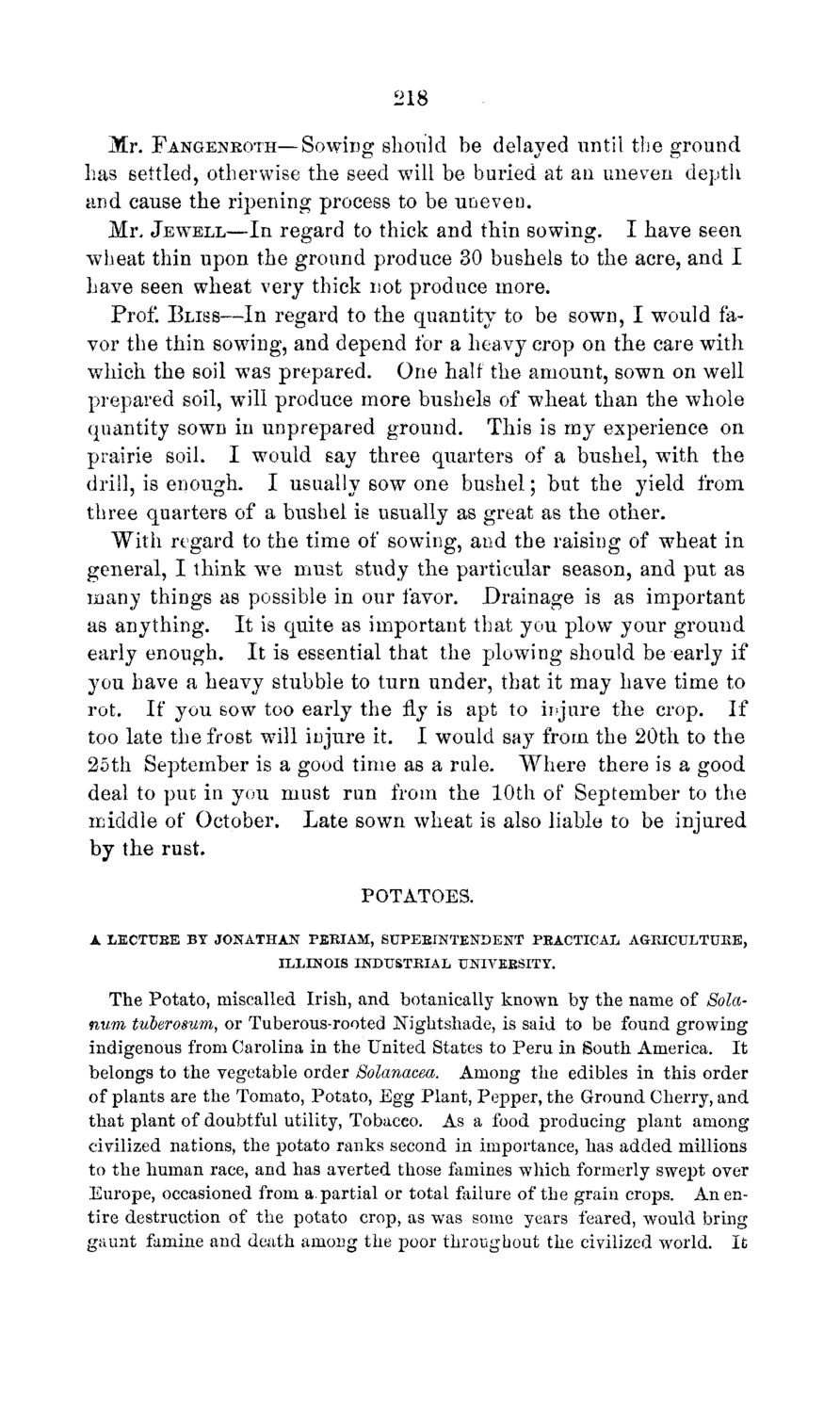| |
| |
Caption: Board of Trustees Minutes - 1869
This is a reduced-resolution page image for fast online browsing.

EXTRACTED TEXT FROM PAGE:
218 Mr. FANGENROTH—Sowing should be delaved until the ground has settled, otherwise the seed will be buried at an uneven depth and cause the ripening process to be uneven. Mr. JEWELL—In regard to thick and thin sowing. I have seen wheat thin upon the ground produce 30 bushels to the acre, and I have seen wheat very thick not produce more. Prof. BLISS—In regard to the quantity to be sown, I would favor the thin sowing, and depend for a heavy crop on the care with which the soil was prepared. One half the amount, sown on well prepared soil, will produce more bushels of wheat than the whole quantity sown in unprepared ground. This is my experience on prairie soil. I would say three quarters of a bushel, with the drill, is enough. I usually sow one bushel; but the yield from three quarters of a bushel is usually as great as the other. With regard to the time of sowing, and the raising of wheat in general, I think we must study the particular season, and put as many things as possible in our favor. Drainage is as important as anything. It is quite as important that you plow your ground early enough. It is essential that the plowing should be early if you have a heavy stubble to turn under, that it may have time to rot. If you sow too early the fly is apt to injure the crop. If too late the frost will injure it. I would say from the 20th to the 25th September is a good time as a rale. Where there is a good deal to put in yon must run from the 10th of September to the middle of October. Late sown wheat is also liable to be injured by the rust, POTATOES. A L E C T U E E BY J O N A T H A N P E R I A M , S U P E E I N T E N D E N T P E A C T I C A L I L L I N O I S I N D U S T R I A L UNIVEESITY. AGRICULTURE, The Potato, miscalled Irish, and botanically known by the name of Solarium tuberosum, or Tuberous-rooted Nightshade, is said to be found growing indigenous from Carolina in the United States to Peru in South America. It belongs to the vegetable order Solanacea. Among the edibles in this order of plants are the Tomato, Potato, Egg Plant, Pepper, the Ground Cherry, and that plant of doubtful utility, Tobacco. As a food producing plant among civilized nations, the potato ranks second in importance, has added millions to the human race, and has averted those famines which formerly swept over Europe, occasioned from a. partial or total failure of the grain crops. An entire destruction of the potato crop, as wTas some years feared, would bring gaunt famine and death among the poor throughout the civilized world. It
| |